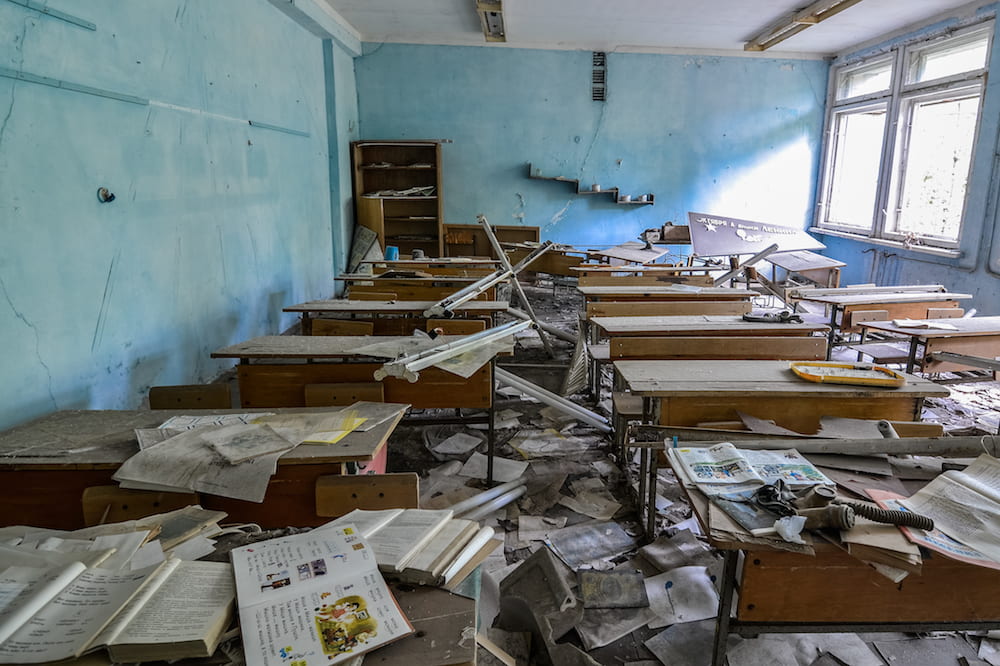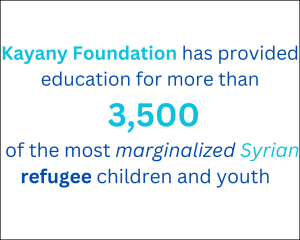
From Crisis to Classroom: Visualizing the Power of External Support
War in the Arab World
Many Arab countries have been through a string of tough wars including World War 1, World War 2, the Gulf War, the Israeli War, and Franco-Syrian War, and many others. These Wars have left a brutal mark on all aspects of life in these countries, making life tough for all the people living there.
Effect of War on Education in the Arab World:
One big area that was affected badly is education. According to the fourth Sustainable Development Goal (SDG), which aims to ensure that everyone gets a fair shot of education and lifelong learning opportunities. The following map tracks how many kids were going to school in the Arab countries from 1960 until today.
Analyzing this data:
Education was in short supply from the get-go in 1960. It wasn’t until 1971 that we saw a slow increase in the number of kids going to primary school in some countries. But, it’s important to note that in other places, the numbers stayed way too low. This shows that even though things got a bit better in some spots, there are still serious challenges in making sure every kid gets a good education.
This bar graph indicates a notable pattern concerning primary school enrollment. Rather than having a consistent upward pattern or stable change, the data reflects an oscillation, characterized by fluctuating values each year. It is important to note that the decrease in enrollment coincides with periods of conflict and war in the Arab world, specifically during 1982, 1984, 1990, 1995, 2006, 2010, 2015…These periods represent the war struggles that these Arab countries were witnessing. This correlation highlights the impact of war on educational accessibility.
War in Syria
Syria has a long history of war. It played a role in the Arab-Israeli conflict, participating in the Six-Day War in 1967, and the Yom Kippur War in 1973. Additionally, Syria was also involved in the Lebanese Civil War from 1975 to 1990 as part of the broader regional dynamics.
The most recent and prolonged war is the Syrian Civil War, which began in March 2011 and involved various internal and external factors contributing to these challenges. Due to this significant crisis, millions of Syrians were displaced internally, and others were refugees in neighboring countries and beyond.
Effect of War on Education
The war in Syria has had a bad impact on education. Many schools have been damaged, and ongoing violence has forced closures. Countless students, both internally displaced and refugees, face difficulties continuing their education. Host countries were under pressure in their educational systems because they had to deal with an unexpectedly large arrival of refugees. Students’ educational experiences were disrupted by the conflict, which had a huge impact on their current and future opportunities.
The presented line chart shows the average enrollment trends in pre-primary, primary, and secondary schools over the years.
- The pre-primary line chart indicates low enrollment, remaining below 10 students throughout the observed period, which emphasizes challenges in early education access.
- The secondary school enrollment line exhibits moderate fluctuations, ranging between 30 and 77 students over the years suggesting the varying levels of access or interest over the years.
- The primary school enrollment line stands out with higher average numbers, consistently surpassing 81 students and reaching a peak of 128. These high and more stable enrollment values reflect a more robust foundation in the primary education system.
The three areas witnessed notable and dramatic decreases following the Syrian Civil War highlighting the huge impact of the War on education.
Looking at just primary education tells a powerful story. Even though primary schools consistently had a lot of students, showing how important they are, the graph takes a heartbreaking turn after the Syrian Civil War in 2011. Schools were destroyed, people lost their lives, and families had to leave their homes – some inside Syria and others in different countries. The numbers on the graph don’t just represent students; they tell a story of how the war shook the very foundation of education in Syria. The sharp drop in primary school enrollment is like a reflection of the tough times people went through. It’s not just about rebuilding schools; it’s about rebuilding the support systems and hope that education brings.
Government Expenditure
This line graph illustrates the percentage of government expenditure allocated to primary education in Syria over the years. In 1972, the commitment to primary education stood at 41%, reflecting an investment in this foundational aspect of the educational system. This dedication continued to rise, reaching its maximum at 48% in 1989, indicative of a sustained prioritization of primary education during that period.
However, the subsequent years after 1989 witnessed a notable shift, marked by a huge decrease in expenditure. This decrease in government expenditure on primary education aligns with the broader challenges faced by the country during this period. Conflicts have a significant impact on financing priorities, making it difficult to continue providing the same amount of cash for education.
The Power of External Support
External support, particularly through Non-Governmental Organizations (NGOs), plays a major role in reducing the educational challenges that people who are affected by war are facing. NGOs often step in to provide vital assistance, especially for displaced children, ensuring they have access to necessary educational resources.
In the context of the Syrian conflict, NGOs have been supporting children who have been forced to leave their homes. These organizations work tirelessly to address the educational needs of displaced children in the countries they seek refuge in.
Example: GHATA schools in Lebanon
Zooming in on Lebanon, an initiative that resembles the impact of external support is the Ghata School. This project is a collaborative effort between the American University of Beirut (AUB) Center of Civic Engagement and Community Service (CCECS) and Kayany Foundation.
The Ghata School exemplifies the power of partnerships between academic institutions and NGOs in providing comprehensive educational support. Through this initiative, Syrian refugees in Lebanon receive not only access to accredited education but also benefit from several digital and soft skills, vocational training, as well as health care.
This shows that due to the help of external support, out-of-school children can join schools for accredited education and improved mental and educational well-being.
